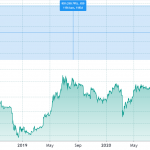Energy storage is undoubtedly a hot topic worldwide. And as more focus is placed on this vital piece of the electricity system puzzle, particularly in the face of the increasing deployment of intermittent wind and solar generating facilities and growing demand for renewable generation, more technologies and approaches are being developed to provide needed storage.
By Elizabeth Ingram
The panel discussion session entitled Recent Energy Storage Project Deployment Around the World that took place on Tuesday, Dec. 5, covered a variety of approaches being implemented worldwide, from hybrid gas turbines to combining steam generation and batteries to compressed air energy storage. Another presentation discussed distributed energy resources at the customer level.
An important point is that this session focused not on size of the energy storage solution but rather on the suitability of each to the unique situation for which they were deployed. Although when you discuss current actual deployed energy storage technology, pumped storage hydropower is at the top of the list, the focus of this discussion was more on smaller, more localized systems that are undoubtedly faster to deploy.
For example, Joe Heinzmann with GE Power Services presented information on a gas turbine-battery hybrid system with up to 50 MW nominal of operating reserve. The example given of application of this technology was Southern California Edison’s Grapeline Peaker project.
Curtis VanWalleghem with Hydrostor discussed the company’s approach to storing compressed air in such a way that the facilities do not need to be sited near a salt mine but instead can be placed at the point of demand. Again, capacities of this technology were small, with systems of 660 kW and 2 MW being developed.
Michael Welch with Siemens AG covered the value of including batteries with steam or gas turbines. He discussed the importance of hybrid solutions to decarbonize power generation.
One unique portion of the presentation discussed locating storage at the customer’s location, with information covered by Matt Owens with Stem and Flavio Dal Lago with Socomec.
Engagement in the content by the audience was robust, with many questions posed. Often I find this portion of a conference session the most valuable and informative, as it indicates their interest in the topic and respect for the panelists as people who can help them get the answers they need. Additionally, audience members who have a special interest in this topic may also have valuable expertise to share with the audience.
One question that arose was around the idea of hydropower and its role as a storage technology – both conventional hydro and pumped storage. One panelist raised the point that pumped storage may not be considered an environmentally-friendly (read low greenhouse gas emitting) technology because it pulls power from the grid that may come from carbon-producing facilities. Session chair Vibhu Kaushik with Southern California Edison discussed the fact that hydropower is a great technology to be “hybridized” with these smaller and more readily available forms of energy storage and that his company is looking into the possibility of adding battery storage to hybridize some of its existing hydropower assets and thus, “a relatively small investment in storage can help unlock the potential of our hydro system,” he said.
Other topics of interest to the audience included the type of batteries being used most commonly and whether the people who are developing these energy storage systems are actually getting paid for the various ancillary services they provide. The answer was promising, with many panelists saying yes.
Energy storage is and will continue to be a hot topic. Look for further coverage of it as POWER-GEN International 2017 progresses.










